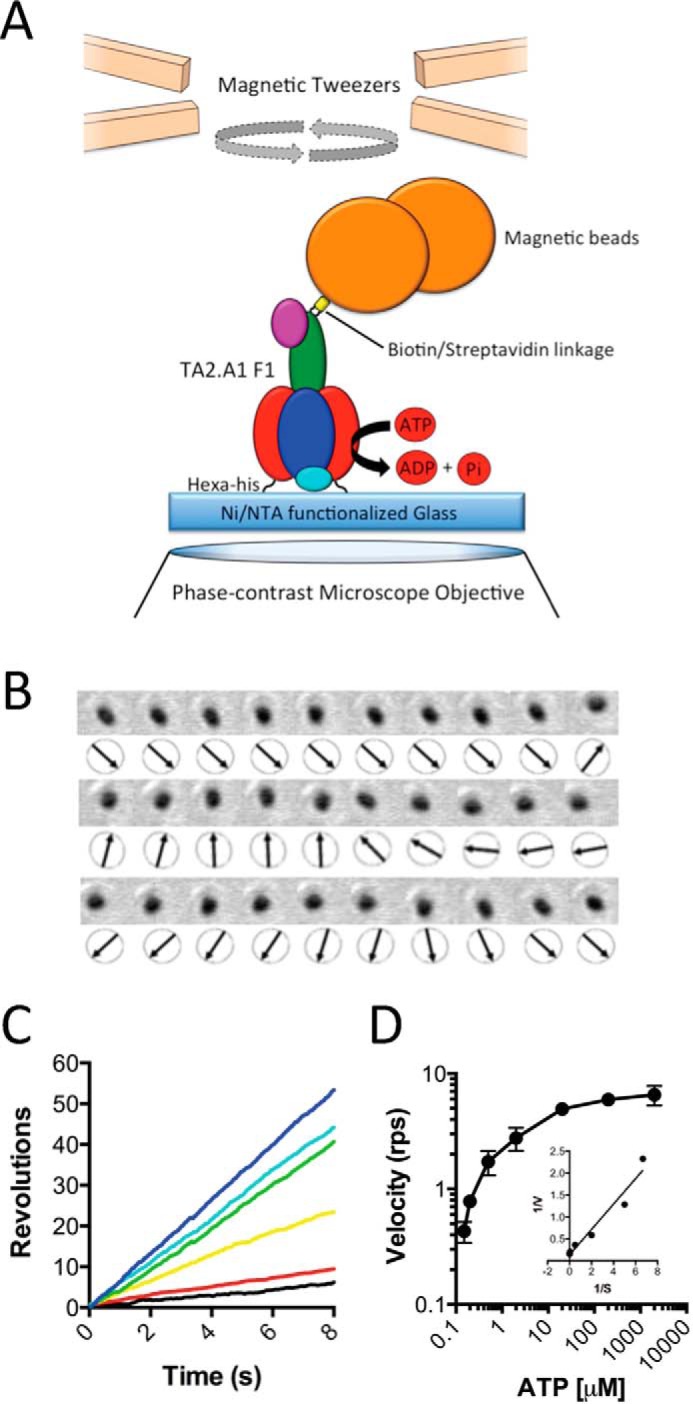FIGURE 4.

Effect of ATP concentration on TA2F1 rotation rate with magnetic beads. A, schematic representation of the experimental setup for a single molecule rotation assay of TA2F1γ2c with a magnetic bead as a probe. The stator α3β3δ subcomplex of TA2F1γ2c was fixed onto the nickel-NTA glass surface with the hexahistidine tag at the N terminus of each β-subunit. A streptavidin-coated 200-nm magnetic bead was attached to biotinylated cysteine residues in the γ-subunit rotor (γH107C/γS210C). B, frame-by-frame montage of a single rotating magnetic bead directly showing rotation states. C and D, effect of ATP concentration on rotation of TA2F1γ2c using the system displayed in A. C, displayed are representative rotation traces recorded at 30 fps with a variety of ATP concentrations: 2 mm (blue), 200 μm (cyan), 20 μm (green), 2 μm (yellow), 200 nm (red), and 150 nm (black). D, displayed are the average rotation rates of 15 molecules at the concentrations of ATP indicated. Error bars represent S.D. D, inset, Lineweaver-Burke plot of data from D used to define the Vmax of 6.5 ± 0.4 revolutions s−1 (rps) and Km of 2.72 ± 0.45 μm. The rotation assay was conducted as described under “Experimental Procedures.”
